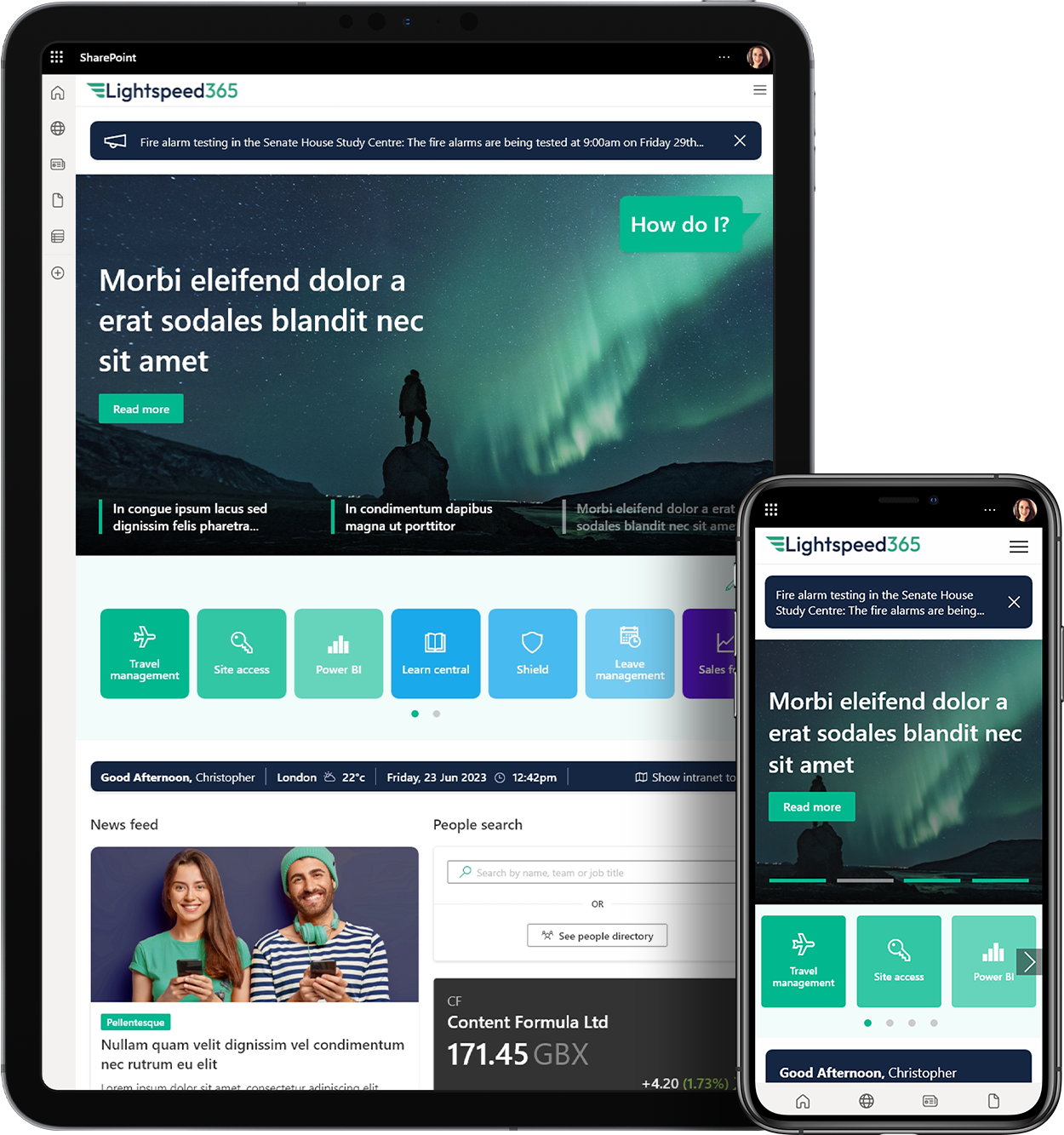Webinar Video – Driving business productivity with PowerApps, Microsoft Teams and SharePoint
Watch our webinar video where we show you case studies and discuss the art of the possible with PowerApps, Teams and SP.
We provide comprehensive, SLA based support services for your intranet and other Microsoft-based applications.

We offer comprehensive Microsoft consultancy services to help organisations build out and optimise their digital workplace.
Find out more about our Microsoft 365 consultancy services![]()
We design and create bespoke process automation solutions to streamline business operations and improve efficiency.
Find out more![]()
We develop custom apps and integrations that are compatible with systems and tailored to meet organisational needs.
Find out more![]()
Specialist knowledge management services to help organisations derive more value form their information assets.
Find out more![]()
Lightspeed365 intranet is a set of premium webparts that significantly improve the employee experience and branding of your SharePoint intranet

At Content Formula, we have been building SharePoint intranets since 2007 and are renowed for our award winning designs.
See SharePoint intranet![]()
We build your SharePoint intranet for a fixed price with our Lightspeed365 packages.
Find out more![]()
 Our custom-built intranet service
Our custom-built intranet service For organisations with more complex requirements, we'll build a tailored intranet to meet your needs.
Find out more![]()
We are experts in Microsoft technologies and deliver market leading consultancy and development services on: SharePoint, Microsoft 365, Teams, Power Platform and Azure.

We are a digital workplace consultancy and Microsoft Partner that specialises in delivering technology solutions and services to help people transform their digital workplace.
See SharePoint intranet design examples![]()
Watch our webinar video where we show you case studies and discuss the art of the possible with PowerApps, Teams and SP.
Should you adopt SharePoint Online’s new modern user interface and sacrifice control over the branding?
SharePoint 2013 does not provide a great experience for content publishers out-of-the-box. This is something that we need to address in nearly every intranet project
Microsoft have revealed the roadmap for Office 365, SharePoint and OneDrive for the next year at #MSIgnite – take a look to see what they have promised here.
If you’re considering Wizdom for your SharePoint intranet and want to find out what existing Wizdom customers think about it you should just ask them yourself! Come to the Wizdom Conference on 15th and 16th March 2017 which will be attended by 150-200 delegates many of whom will be Wizdom customers.
===update 27th May 2016=== With the demise of Yammer Conversations what looked like quite a cool initiative to bring Yammer comments into Office Docs and vice
The intranet is no longer one thing. While the intranet may be the foundation of the digital workplace, it is made up of several platforms
As someone who has been focusing on Enterprise Search in SharePoint for years, I can say I now know it inside out. There are things
Most people are eager to update to the latest version of their favourite app, but its just not possible to press an update button with SharePoint. The wise intranet manager will have a certain amount of trepidation as they embark along the SharePoint migration path.
You might be most concerned with making sure site collections (Team Sites, My Sites) get upgraded to SharePoint 2013 smoothly; find out what to watch out for as you hit the metaphorical update button.
Book in a live demo with us to discuss your project and find out more about our services, solutions and how we can add value to your digital workplace. Simply fill out the form and pick a time and date in our calendar.
Alternatively, if you have a question and would like more information about Content Formula, please visit our contact us page.
We look forward to meeting you.
![]() SharePoint
SharePoint
![]() Office 365
Office 365
![]() Teams
Teams
![]() Yammer
Yammer
![]() Azure
Azure
![]() Power Automate
Power Automate
![]() Power BI
Power BI
![]() LiveTiles
LiveTiles
![]() LMS365
LMS365
We use cookies to give you the best experience on our site. By continuing to use our website, you are agreeing to our use of cookies. To find more about the cookies, please see our cookie notice.
You can also read our privacy policy.